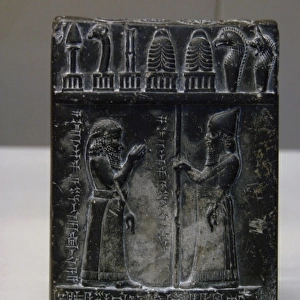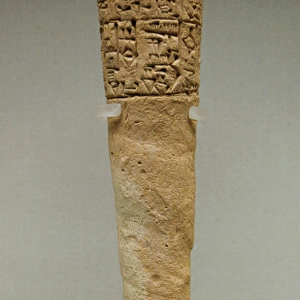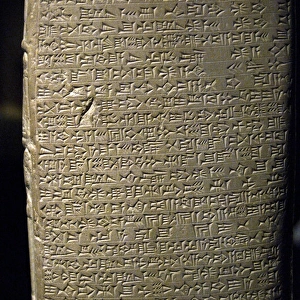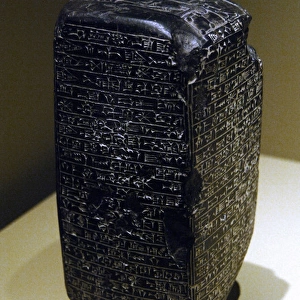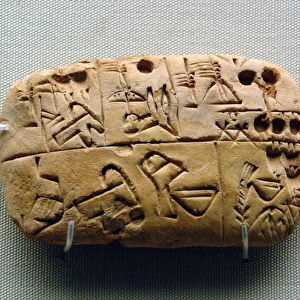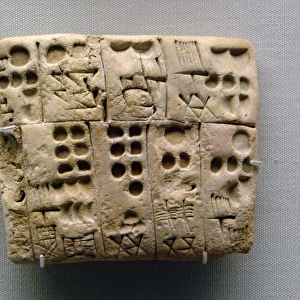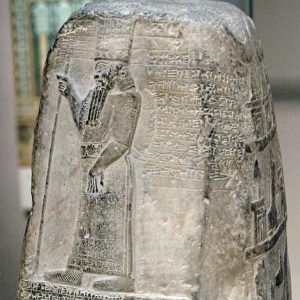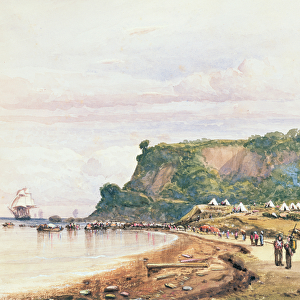Home > Europe > United Kingdom > England > London > Sights > British Museum
Limestone kudurru of Meli-Shipak. Kassite Dynasty. Babylon
![]()

Wall Art and Photo Gifts from Mary Evans Picture Library
Limestone kudurru of Meli-Shipak. Kassite Dynasty. Babylon
Mesopotamian Art. Kassite Dynasty. Limestone kudurru. Four-sided block with conical top. Right side. The text contains a deed of gift recording a grant of fifty gur of corn-land in the province of Bit-Pir -Amurri by Meli-Shipak to Khasardu, the son of Sume. Cuneiform script. It comes from Sippar. 1186-1172 B.C. British Museum. London. United Kingdom
Mary Evans Picture Library makes available wonderful images created for people to enjoy over the centuries
Media ID 14364979
© Thaliastock / Mary Evans
12th Babylon Babylonian Boundary Carved Cuneiform Document Dynasty Gift Grant Inscribed Kudurru Legal Limestone Mesopotamia Mesopotamian Script Kassite
FEATURES IN THESE COLLECTIONS
> Europe
> United Kingdom
> England
> London
> Museums
> British Museum
> Europe
> United Kingdom
> England
> London
> Sights
> British Museum
> Historic
> Ancient civilizations
> Mesopotamia
> Ancient Mesopotamian art
EDITORS COMMENTS
1. Title: Meli-Shipak's Limestone Kudurru: A Testament to Ancient Babylonian Land Grants 2. Description: This limestone kudurru, hailing from the ancient city of Babylon during the Kassite Dynasty (circa 1186-1172 B.C.), showcases the intricate art and rich history of Mesopotamia. The four-sided block, topped with a conical feature, is inscribed with cuneiform script, a writing system that was prevalent in the ancient Near East. On the right side of the kudurru, we find a deed of gift recording a land grant. Meli-Shipak, a Kassite king, bestowed fifty gur of corn-land in the province of Bit-Pir-Amurri upon Khasardu, the son of Sume. This significant grant was meticulously carved into the limestone, providing a tangible record of the transaction. The text on the kudurru serves as a testament to the legal and administrative practices of the Babylonian civilization. The use of such documents for recording land transactions was common during this period, ensuring the establishment and maintenance of clear boundaries. The kudurru also serves as an invaluable historical artifact, providing insights into the social and political structures of the ancient world. Originating from Sippar, this remarkable piece is now housed in the British Museum in London, where it continues to captivate scholars and visitors alike, offering a glimpse into the rich history and artistic achievements of the Babylonian civilization.
MADE IN AUSTRALIA
Safe Shipping with 30 Day Money Back Guarantee
FREE PERSONALISATION*
We are proud to offer a range of customisation features including Personalised Captions, Color Filters and Picture Zoom Tools
SECURE PAYMENTS
We happily accept a wide range of payment options so you can pay for the things you need in the way that is most convenient for you
* Options may vary by product and licensing agreement. Zoomed Pictures can be adjusted in the Cart.



